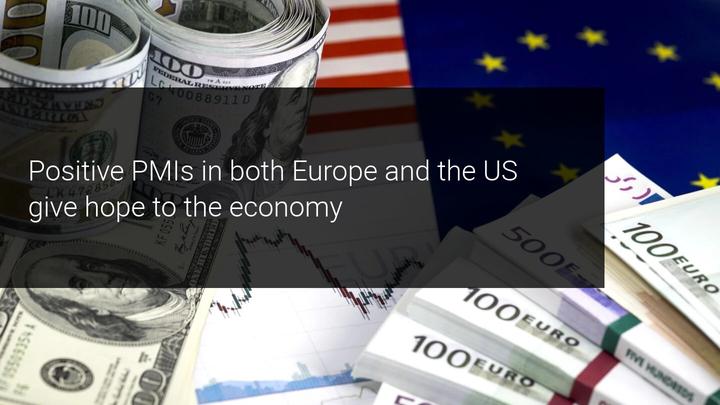After Monday’s Good Data, The Service Sector PMIs Also Give Hope To The Economy
Last February, we talked about good data from Germany in relation to last year's German GDP, and good data in relation to the German investor confidence for the next six months, March has begun with positive news regarding the macroeconomic factors.
On Monday we learned of positive data regarding the manufacturing PMIs in both Europe and the United States, and today we have also seen positive results in the service sector PMIs.

Manufacturing PMIs provides information on the economic activity within the manufacturing sector, where a result above 50 indicates expansion and growth of this industry. On the contrary, a figure below 50 is considered negative, meaning the economy in this sector is contracting.
Specifically, the manufacturing PMIs exceeded both market expectations and the data of the previous month for Spain, France, Germany, the United Kingdom, and the United States. Italy was the only negative in this dataset, with a result slightly lower than expected by the market consensus, although higher than the previous month's data.
For its part, the service sector PMIs measures economic activity through purchases. As in the manufacturing PMI, a reading above 50 is considered positive suggesting good future prospects, while a reading below 50 is considered negative.
This data has been positive in Spain, Italy, France and in the eurozone as a whole, although Germany’s results were not only lower than expected by the market consensus, but it has also been worse than the previous data. The UK also performed slightly worse than expected, and data from the US will be released this afternoon.
Despite these good results, the Euro is currently down slightly more than 0.10% against the US dollar, leaving for the moment the monthly variation practically flat.
Technically speaking, if we look at the H4 chart in the EUR/USD, we can see how in recent weeks the trend has been downward after marking annual highs on January 6 at 1.23492 until losing the level of 1.20, marking lows on February 5 at 1.19521. From that moment, this pair moved within a bullish channel until its break on February 26, which led it to bounce back at the 1.20 level to make a pullback to the lower band of the channel.
After this last movement, it is important to observe if the price is able to recover this level and exceed its average of 200 in red in order to resume the uptrend or if, on the contrary, it bounces down, seeking again the annual minimums.
(Click on image to enlarge)

Source: H4 chart of EURUSD from Admiral Markets MetaTrader 5 platform from December 10, 2020 to March 3, 2021. Taken on March 3 at 12:15 CET. Note: Past performance is not a reliable indicator of future results, or future performance.
Price evolution of the last 5 years:
- 2020 = + 8.93%
- 2019 = -2.21%
- 2018 = -4.47%
- 2017 = + 14.09%
- 2016 = -3.21%
Disclaimer: The given data provides additional information regarding all analysis, estimates, prognosis, forecasts or other similar assessments or information (hereinafter ...
more


